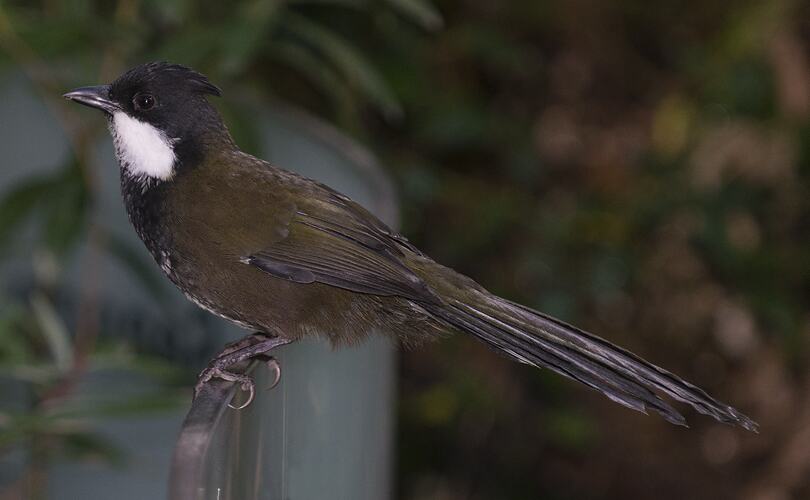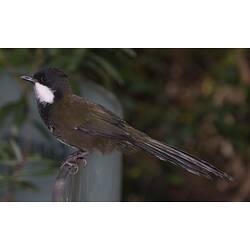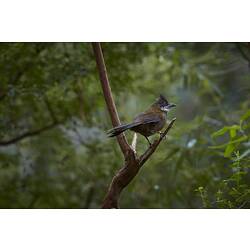General Description
Eastern Whipbirds are easily identified by their characteristic whip-crack call. They have a dark olive-green body and a long dark olive-green tail with a white tip. The head, bill, breast and feet are black and the abdomen is grey-white. They have a distinctive black crest and a white cheek patch. The size of the cheek patch increases with the age of the bird and is completely absent in young chicks. Bill to tail length is up to 30 cm.
Biology
Eastern Whipbirds are quite secretive and are heard much more frequently than they are seen. Their characteristic long whip call is performed as a duet. The drawn out whip crack is made by the males and is then immediately followed with the "choo-choo" made by the females. Eastern Whipbirds are monogamous and will defend their established territory year round. During the breeding season, the female uses bark and sticks to create a cup nest that she then lines with grasses. Females lay and incubate up to three eggs, then both males and females feed the young chicks. Eastern Whipbirds forage in the leaf litter on forest floors feeding on small invertebrates.
Distribution
Coastal eastern Australia.
Habitat
Wet eucalypt forests and woodlands, rainforests, dense scrub near water bodies.
More Information
-
Animal Type
-
Animal SubType
-
Brief Id
An olive-green bird with a distinctive crest and white cheek patch. More commonly heard than seen.
-
Colours
Olive-green, Black, White
-
Habitats
-
Diet
Invertebrates
-
Endemicity
-
Commercial
No
-
Conservation Statuses
CITES: Not listed, FFG Threatened List: Not listed, EPBC Act 1999: Not listed, IUCN Red List: Least Concern
-
Taxon Name
-
Common Name
Eastern Whipbird
-
Kingdom
-
Phylum
-
Subphylum
-
Class
-
Order
-
Family
-
Genus
-
Species Name
olivaceus



